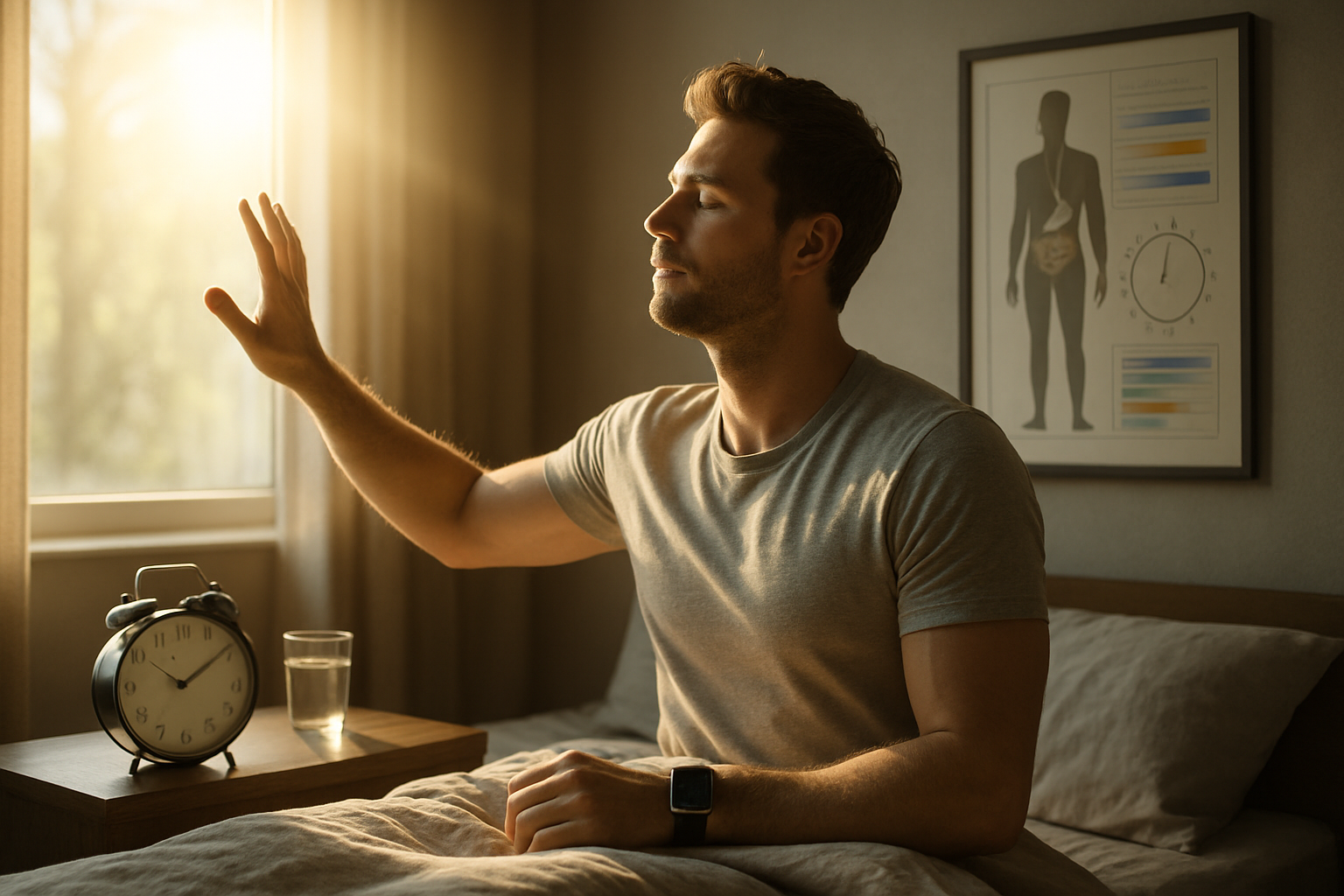Circadian Rhythm Optimization: Aligning Your Life with Nature's Clock
The ancient wisdom of living in harmony with nature's cycles is gaining renewed attention in modern health circles. Circadian rhythm optimization, a cutting-edge approach to wellness, promises to revolutionize how we think about health, productivity, and overall well-being. But what exactly is this concept, and how can it transform our lives?

Understanding Circadian Rhythms
Circadian rhythms are the body’s internal 24-hour cycles that regulate various physiological processes, including sleep-wake patterns, hormone production, and metabolism. These rhythms are primarily influenced by light exposure and are controlled by the suprachiasmatic nucleus in the brain, often referred to as the body’s master clock.
Historically, humans lived in sync with these natural rhythms, rising with the sun and resting at night. However, modern lifestyles, characterized by artificial lighting, late-night screen time, and irregular schedules, have disrupted these innate patterns, leading to a host of health issues.
The Science Behind Circadian Optimization
Recent research in chronobiology has revealed the profound impact of circadian rhythms on health. Studies show that misalignment of these rhythms can contribute to various health problems, including obesity, diabetes, cardiovascular diseases, and even certain types of cancer.
Circadian optimization involves aligning daily activities with the body’s natural rhythms to enhance overall health and performance. This approach considers factors such as light exposure, meal timing, exercise schedules, and sleep patterns to create a lifestyle that supports the body’s innate cycles.
Benefits of Circadian Rhythm Optimization
Embracing circadian rhythm optimization can lead to numerous health benefits:
-
Improved sleep quality and duration
-
Enhanced cognitive function and productivity
-
Better mood regulation and reduced risk of depression
-
Optimized metabolism and weight management
-
Strengthened immune system
-
Reduced risk of chronic diseases
By aligning with natural rhythms, individuals often report feeling more energetic, focused, and balanced throughout the day.
Practical Strategies for Circadian Alignment
Implementing circadian optimization doesn’t require drastic lifestyle changes. Small, consistent adjustments can yield significant results:
-
Light exposure: Seek bright light exposure in the morning and limit blue light from screens in the evening.
-
Consistent sleep schedule: Maintain regular sleep and wake times, even on weekends.
-
Meal timing: Align meals with the body’s natural metabolic rhythms, avoiding late-night eating.
-
Exercise timing: Schedule workouts to coincide with the body’s natural energy peaks.
-
Temperature regulation: Keep bedrooms cool at night to support the natural drop in body temperature during sleep.
Challenges and Considerations
While the benefits of circadian optimization are compelling, implementing these changes can be challenging in modern society. Shift work, travel across time zones, and social obligations can disrupt natural rhythms. However, strategies exist to mitigate these challenges, such as gradual light exposure adjustments and strategic napping.
It’s important to note that individual circadian rhythms can vary. Some people are natural early risers, while others are night owls. Understanding one’s chronotype can help in tailoring circadian optimization strategies for maximum benefit.
Circadian Rhythm Facts and Tips
-
The circadian rhythm cycle is slightly longer than 24 hours for most people, typically around 24.2 hours.
-
Exposure to morning sunlight for just 30-60 minutes can significantly improve nighttime sleep quality.
-
The body’s core temperature naturally drops about 1-2 degrees Fahrenheit during sleep, enhancing sleep quality.
-
Meal timing can act as a zeitgeber (time giver) for peripheral clocks in organs like the liver and gut.
-
Regular exercise can help strengthen circadian rhythms, but timing matters – morning exercise tends to advance the sleep-wake cycle, while evening exercise may delay it.
Circadian rhythm optimization represents a paradigm shift in our approach to health and wellness. By aligning our lives with nature’s cycles, we can unlock new levels of vitality, productivity, and well-being. As research in this field continues to evolve, the potential for personalized circadian-based health interventions grows, promising a future where living in harmony with our internal clocks becomes the foundation of holistic health.




